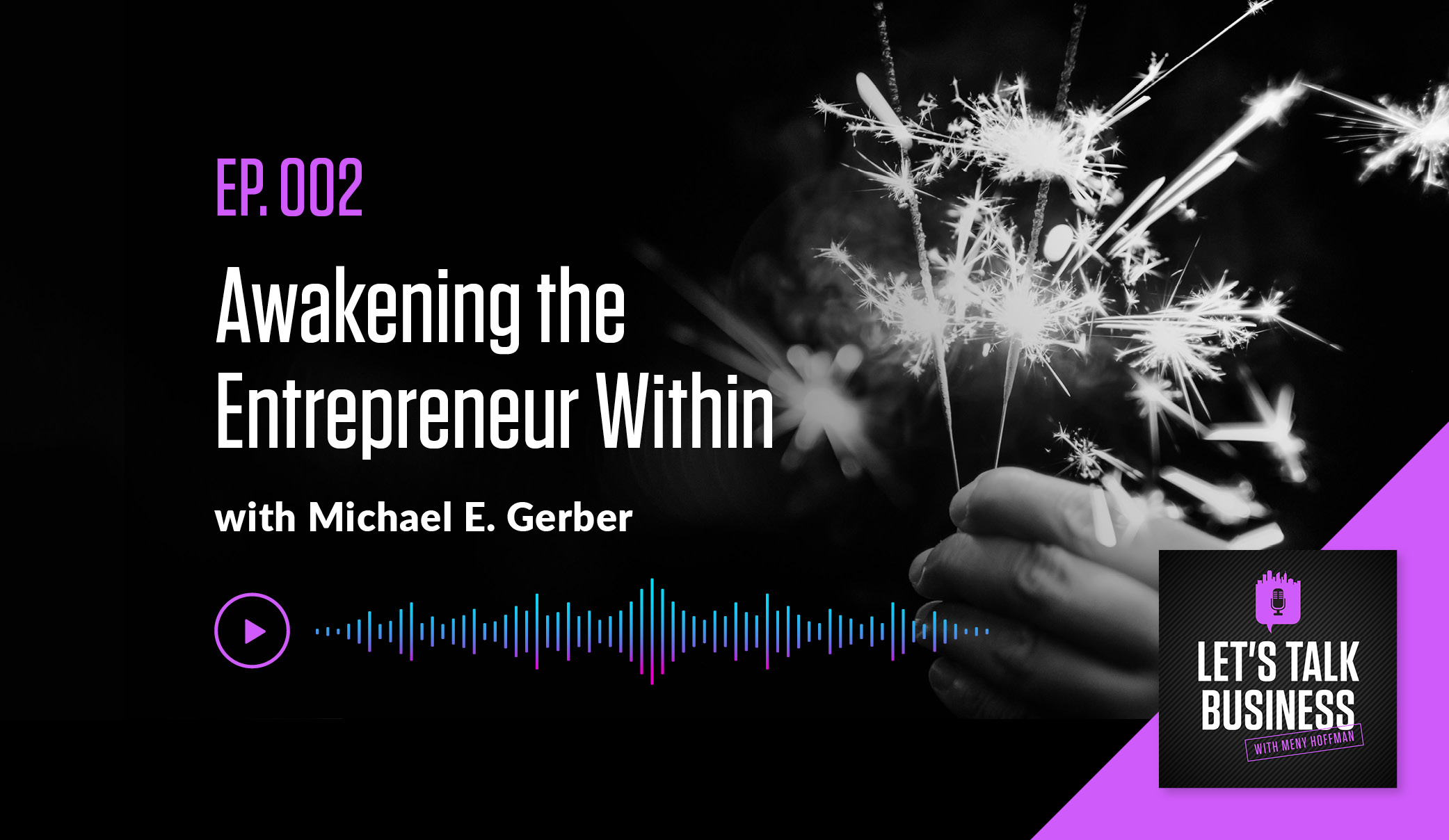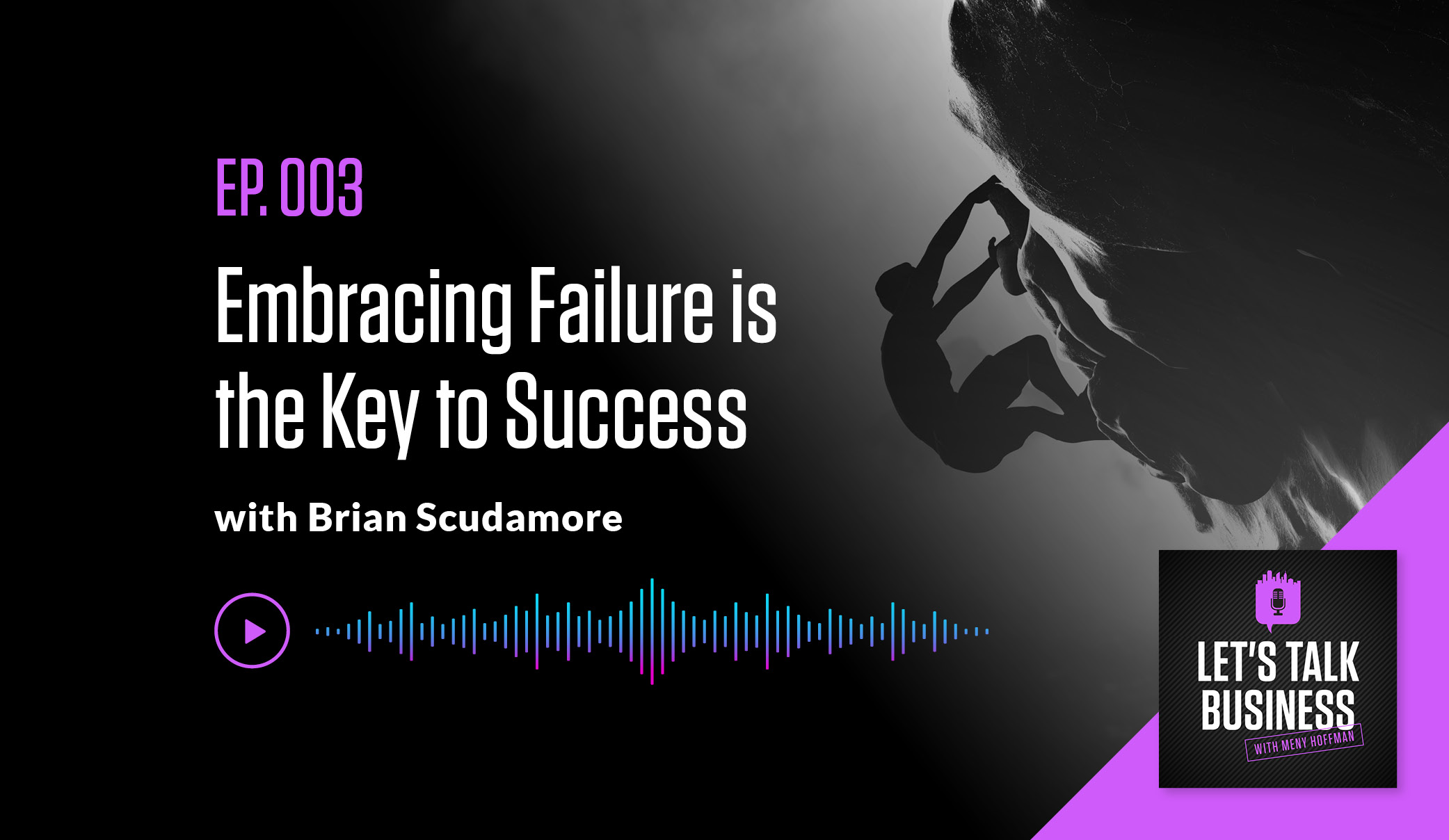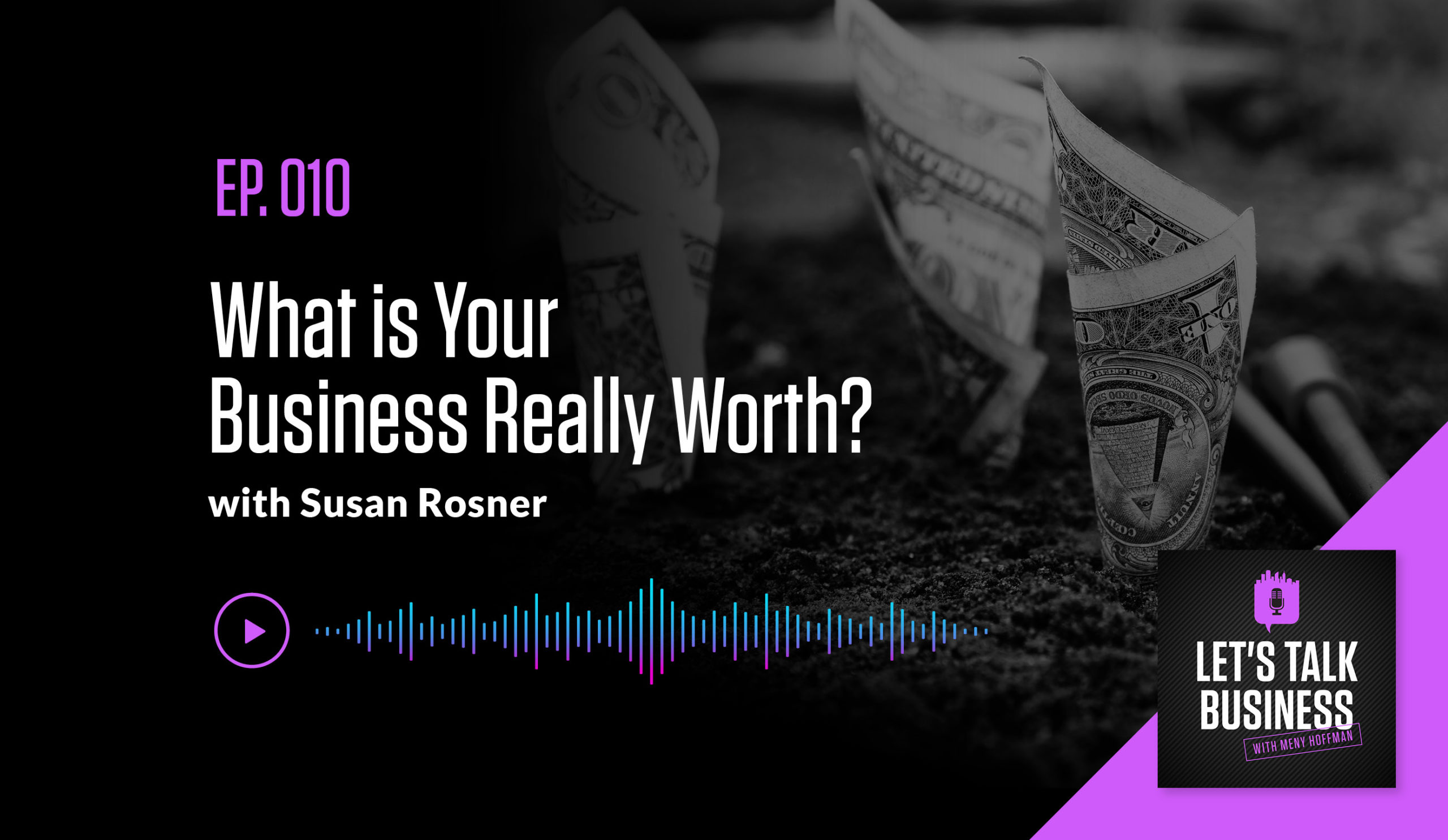Seasoned mergers and acquisitions dealmaker Susan Rosner discuss how you can start building value into your company now so you can sell it successfully later.
- What the “owner’s trap” is and how it can negatively impact your ability to sell
- The “value builders” that every business owner needs to take into account as they grow their company
- The difference between strategic planning and ownership planning, and why businesses also need to focus on the latter
- The factors that determine the value of your business to a potential buyer or investor
Listen and enjoy!
Listen to the podcast here:
Download the audio file here.
What Is Your Business Really Worth? with Susan Rosner [Transcript]
Before I dive into this episode, I would like to take a moment and say thank you for those who rated and reviewed the show on iTunes or Google Play. It’s with your support that we are able to get the show to many more business owners. If you haven’t left a review yet, please take a moment to go to iTunes or Google Play and rate and review the show.
If you’re growing your company, you’re probably focusing on growing, scaling, hustling, putting in hours of work and maybe even living off paycheck to paycheck. I’m speaking about a very important topic today, build to sell. As you’re growing your company, you have to focus on building a company that’s sellable even if you’re not ready to sell, but you need to be able to build the value within your business so the business is valued without you being part of it.
I’m very excited about our guest today. She is Susan Rosner, a Managing Partner at Calder Associates, a mergers and acquisition firm. Susan has completed transactions ranging the value from $1 million to a $100 million and has a rate of selling 95 of the businesses she represents. In this episode, take note of how she describes the important value builders every business owner has to take note as the growing the company. We went into details understanding what the owner’s trap is and how to get out of the owner’s trap in order to build value for your company. We also discussed how so many business owners are focused on strategic planning, but unfortunately not enough on ownership planning. Ultimately, what the deciding factors of valuing in business are. Without further ado, here is my interview.
—
Susan, thank you so much for joining me on the show.
Thank you so much for having me.
I’m very excited to speak with you. In the past, our audience knows that most of those episodes are about business growth, personal growth and so on and so forth. There’s a topic that I know is very important for business owners, but it’s not talked enough in the business world. Maybe in the venture capital world or the software business, but an average typical business owner doesn’t talk enough about selling the business and valuing their business and actually building their company in a way that it’s sellable. Understanding what is my exit strategy and what is my business is going to be worth. When they start looking at those things and they actually build a company in that way, they find themselves at the end.
If they do want to make an exit or they do want to pass on the business to somebody else or so on and so forth, the value is there. Sometimes while you find out at that point, it’s too late to start building value. I brought you on this show, so I know you have a lot of experience and I want to touch a lot of those different value builders as we call them and to understand what it is and how business owners could actually take note and actually build them into the process as they’re scaling and growing their business. Let’s get started then. For our audience, give us a little bit of background about your experience and in general in the M&A, which is the mergers and acquisitions world. What is it all about?
I started my mergers and acquisitions practice several years ago. It was driven by this observation that I had that a lot of business owners were Baby Boomers and they were facing retirement. It was going to become increasingly important for them to decide on what their succession plan was going to be. For many of them, their children didn’t want to be in the business. What options did they have? One of the options was to take this entity that had created enormous value for them and it had value for someone else and to see if they could sell it on the open market. That’s how I got started. I saw this opportunity and I began to work with the Baby Boomer business owners.
One of the things that surfaced during that time was that these business owners had not run their business in a way that would provide them with the opportunity to sell it. The number one issue was that they got caught in what I’m going to call the owner’s trap. They were so involved in their business, they didn’t step away. When it came time to sell it, there was no value beyond them. That’s why it’s so important to have this discussion now for some of your audience who are even early on in developing their businesses. It’s not only about ultimately one day selling your business, which might be hard for some people to think about, but it’s also about creating some freedom from your business, so you’re not constantly a slave to your business. You are unable to do other things in your life that your business should be able to support you in doing.
Let’s start there. Let’s dive in a little bit deeper on understanding, what is the owner’s trap? Those two words right away clicked and I bet a lot of the audience said, “What is the owner’s trap?”
The owner’s trap is a situation in which you simply can’t get away through your business. When you get away, the business slows down. The customers only want you to solve problems and in many cases, the revenues have plateaued. You can’t get past that certain plateau and it’s usually because the owner is doing all the sales, the owner is doing all the problem solving, they own the customer relationships, maybe they have too many products. There are a number of things that happen that ultimately results in that business owner simply not being able to get away. You hear them complaining they can’t go on vacation or when they go on vacation, they’re always taking phone calls. That’s the owner’s trap.
To jump a little bit into the concept of selling, why is that an issue when it comes to valuing your business?
We’ll hopefully get into a conversation about business value, which is largely driven by financial performance. You could have a very profitable business, but if someone assesses that you are the person who’s critical to the business, you own all of the customer relationships. You are doing most of the key work. You are driving the revenue. You’re primarily in charge of sales or even in charge of delivering, then that has a very negative impact on value. In fact, it may make your business unsaleable.
Basically, it’s not a business. It’s all about yourself. If they want to buy a business, they want to be able to say, “We don’t need you.” They can still run that business. They make a lot of money.
That’s at the core of valuation, which is it’s an entity that can run without the business owner. That’s the concept. How do you create a business that runs without the business owner? The business owner steps away and becomes more of an investor. It’s very difficult for a business owner to do that 100%. I’m not saying that you can’t sell a business if the business owner has an active role in the business, but the goal is to get a management team in place. It’s to get an organizational structure in place so that you have a system that can be sold to somebody else that’s separate from you.
It answers the question that even if at the moment you’re not thinking of selling or you’re not thinking of exiting but for the freedom part, it’s also to be able to know that you’re building a business, you’re not just building an income for yourself. What I hear a lot from business owners is that when they are trying to value the business, they’re basically valuing at how much money they took out of the business. Ultimately that’s fine, but that means they were employed for an entity. They’re not building any wealth which should they want to have the freedom, should they want to leave, should they want to sell or should they want to pass it on? You can give equity to other people coming in and growing the business based on what I understand what you’re trying to say over here is that there’s no value because there’s no business value.
There’s lesser business value and in some cases, there’s no business value. There are other things, of course, that drive value. One of the things that I often try to distinguish is between strategic planning and ownership planning. There are a lot of emphases put on strategic planning. How do you build your business? What do you do in each period in order to grow your business? There’s this other notion of ownership planning, which is about how the owner is going to not only grow their business but create something of value. Ultimately looking at goals and looking at where do you want to be at the end of the day? When you’re ready to retire, what do you want to leave behind and what kind of value do you want to leave behind not only for yourself but for your customers and your employees?
That shifts the conversation to this whole conversation of, “How do I build something that is going to last beyond me?” The point I want to make is it’s not only about building wealth. When I looked at this problem twenty years ago, I said, “Not only could this create an issue for the business owner who might have to close their doors but if they close their doors, what happens to their employees? What happens to their customers? What happens to their vendors?” It has a very large effect on the whole economic system. It is important to have this discussion early on because if you’re not creating and if you’re not thinking about that at the end of the day, if you don’t have a plan, it can have a broad sweeping effect.
Let’s dive into those value builders because my next question would be if a person reading this and they’re thinking to themselves, “Who knows how much my business is worth? Where am I in the spectrum of building value to my business through ownership planning and understanding where my business is at the moment?” The best way is let’s dive into those value builders and let’s hear what they are. Let’s start seeing how business owners can actually value the business.

Let me start with a discussion about how businesses are valued and the business valuation starts with financial performance. Valuing a business when you’re looking at a buyer potentially buying the business is different than valuing the business. Some people get valuations for life insurance or buy-sell agreements or estate planning. When a buyer is looking at the business, they’re looking at it in a little bit of a different way. The first thing they do is they look at EBITDA, Earnings Before Interest, Tax, Depreciation and Amortization. That’s a fancy way of saying, “Look at your tax return, look at your net profit on your tax return, add back your depreciation and interest,” and that’s their EBITDA and that’s a place to begin.
Buyers also understand that business owners often use their business to compensate themselves in ways other than salary. There are some benefits they take out of the business. You can begin to look at those things that you might take out of your business and also add them to that net profit. You can restate your financials that show truly what you take out of your business and what is not necessarily going to be replicated by somebody who will buy your business in the future. One kit, one time, large expenses. Maybe you’d take your auto or maybe you pay a family member who’s not necessarily working at that level in the business. There are a number of things that are done by business owners to make their bottom-line number look more beneficial for tax purposes and you can add those back. The banks allow that. You get to a number and then people talk about multiples. People often say, “Your business is worth this multiple of EBITDA.” Those multiples generally range for small businesses from two to five and from larger businesses from five to seven. That multiple is based on the strength of some of these other factors that I’m going to talk about. These are the qualitative factors that impact valuation.
I wanted to ask the question of what differentiates the multiples, but I guess you’ve got to get to it.
The multiples are a shorthand way to talk about risk. Let’s say you take a business with an adjusted EBITDA based on what I’ve just said of $1 million. You can add or subtract the zeros, but you’re using the same concepts. A $1 million business or a $1 million EBITDA can be multiplied by let’s say a five to an eight multiple. Let’s say that the business is very dependent upon the owner. Let’s say that the business has all the old equipment. Let’s say that business has been declining as opposed to increasing. That sounds like a business that has a lot of risks to it. The chances are that multiple is going to be on the low side. In fact, that multiple might go down with two or three as opposed to a business that’s doing $1 million where the business owner has a management team in place. The business owner is only there to develop the strategy. The day-to-day operations are run by the business owner. They have all new equipment. Their business has been increasing.
That’s less risk to a buyer that business is going to continue. That multiple is higher. The higher the risk, the lower the multiple, the lower the risk, the higher the multiple. I could talk a little bit more on some of these other factors that are going to affect that multiple but what you want to think about is you want to think about what is the risk in your business? As you read these factors, what kind of risks do you have in your business? If it’s low risk, you’re going to get a higher multiple. Higher risk, a lower multiple and obviously you want to address those higher-risk issues first. Does it make sense?
Yes, and I think I would add is that the same thing that we are speaking about the owner being evolved as you call it before the owner’s trap, it could be it’s a key employee that they’re the trap as well.
Let me go there first. That’s this notion of concentration. If there’s concentration of your customer base, if there’s dependency on an employee or yourself or a vendor, that’s high risk. Think about if you have one vendor that’s a major supplier to you, that’s going to increase the risk. There is a chance that if that vendor goes out of the business, the business may not have a life after a new buyer. If you have some employees that are so critical to the business that if you lose them, it’s going to have an impact on your business. That too is to increase the risk of your business and lower your multiple.
The concentration of customers is one that can be a deal killer. A concentration of customers won’t necessarily increase the risk but it might kill the deal. You have to be very careful not to have too much of your business in one customer. If you have 80% of your business in one customer, the buyer is going to look at that and say, “If that customer runs into trouble, then I don’t have any business in the future.” The likelihood that revenue stream is going to continue is minimum. It’s too high risk and there will be no deal. Concentration and dependency are major factors.
What other value builders are there to look at other than what you just mentioned?
Growth potential. You want to take a look at your market and say, “Where is the growth in the market?” You are in a business where the market is shrinking and you need to innovate and find new opportunities for growth. One example, I was talking recently to an individual who had business in the training world and they were doing a lot of IT training and now with these kids growing up, they’re taking a lot of these programs in school. By the time they get out of school, they don’t have the need to know Microsoft or Access or PowerPoint or some of the other applications. Their business had to shift and change in order to be able to continue to grow. You have to look at your business and say, “What are the trends? Where can we potentially grow in the future?”
What I would add based on what you’re just mentioning and I think it’s important because I do know there’s a lot of audience on the show which will say, “I’m not seeing that for immediate.” Another scenario, which I think and I want to ask you for your opinion on that where this all could play out is sometimes a company’s going through a growth phase where they need to raise capital. They’ll need to bring in maybe a partner or somebody to come in with equity shares and so on and so forth. Those valuations will all play out at that point exactly the same as it had been a full sale, correct?
Yes. In fact, we do a lot of recap. We call it a recapitalization or recap. Many of these business owners have done everything well and right. Maybe they’re still having a little bit time extricating themselves but they do need capital to grow and they want to take on a partner. All of these elements are going to be critical to that partner deciding whether they too want to invest and buy part of the action and hopefully help you grow.
Let me ask you a follow-up question. We live in a very diverse market and business. Obviously, there is the product businesses, service businesses and now there are a lot of technology businesses, which is more a lot of recurring revenue. Based on your experience, how did those multiple business change between other than the value of builders that we discussed? Are they totally different numbers based on the different sectors in business?
There are eight value-builders. I think so far we’ve talked about four, the financial performance, the growth potential, the dependency on the owner and one of the other value builders is recurring revenue. If you have a business that either does or has the potential of having recurring revenue, like many of the technology companies, that is definitely going to have an impact on saleability as well as a valuation. If you think about recurring revenue, it lowers the risk tremendously for a new buyer if there’s a recurring revenue stream.
What would be the additional three or four value builders that we didn’t cover?
You also mentioned this notion of having to raise capital. That is also tied into this notion of a business that has a lower risk. It’s a business that can generate excess cashflow as it grows. It’s a little tricky. You have some businesses, particularly construction businesses or businesses that are very capital expenditure-intensive. As they grow, their cashflow is often eaten up by capital expenditures. The trick is to grow and continue to be able to have that excess cash and that takes a lot of thinking about where you want to grow and how you want to grow.

In many cases, it challenges business owners to pick which area they weren’t going to grow in that’s going to be the most profitable as opposed to just which area can you grow in that just brings in your top-line revenue because those are very two different things. You can get a project for $1 million that cost you $1 million or you can get a contract for million dollars that cost you $200,000. That’s what you’re trying to also look at in your business. The other one is the competitive environment in which you’re working in. It’s good to have competition.
In some ways, you don’t want to have an opportunity that there’s no competition because then there’s a question as to whether there’s a true market there. If there’s too much competition, then there may be a disadvantage to that. You want to assess your business and be able to look at where you can compete. Where you can have a competitive advantage and compete in a market, as we talked about earlier, that’s growing. There are competitors, but you bring something special to the table. You bring something unique to the table. Where your competitive advantage is, it is important.
Finally, how your customers think about you is important. When a buyer is looking at the business, they’re going to say, “Can we talk to your customers?” That often happens very late in the game but you can show a buyer how satisfied your customers are by their repeat business, not necessarily the recurring business that we talked about earlier. The customers that come back to you again and again, you can do some customer satisfaction research so you can present to your customers that you are fulfilling their needs and it serves you not only for a buyer’s perspective but also as you’re growing your business. You want to get feedback from your customers. Getting that feedback and having stellar feedback from your customers do have an impact on valuation.
This is very valuable. We have Value Builder questionnaire to assess where the audience are on the spectrum. To see how their company’s value is value with at this point in order to be able to see how they could improve. I want to touch another point. We spoke about multiples on EBITDA, which is net profit. Obviously, early-stage companies especially in technology now where we could go from pre-revenue or in a growth phase where there is no revenue. We especially see it now with so many mergers and acquisition, especially in the larger VC world, which is coming out of those different software developers and people that have exited multiple companies. How is that playing a role with what you just discussed? Is there any valuation for companies and how is a company pre-revenue or based on the idea, based on the growth in the market, valued other than profitability?
That is a good area and we probably could do a whole show on that. The issue is where you’re going to get valuation on pre-revenue or early revenue is based on proprietary product and some demonstration of a real innovation that’s going that will change your market. As a general rule, we’re not dealing with that because from a business perspective, the statistics on working on those kinds of deals don’t bode well for us because there are very few of them that actually will hit it right and hit it big.
People often talk about Angel investors, private equity groups and venture capital. We deal more with private equity that are looking for businesses that have proven themselves in the marketplace. Venture capital and Angel investors are the ones that are going to be focusing on those particular opportunities where they have money to invest and they can take some risk on something that they see as a change-maker in the market or as an innovator or as a proprietary opportunity that’s going to ultimately get some hockey stick result. That’s just low probability.
Based on the experience that I’ve worked with certain companies that have gone that route, what I feel is it’s like you just said, a lot of them is hit and miss. When you are speaking to VCs, venture capitalists and they have large funds, they’re hitting a bunch of those startups and then some of them hit and some of them miss and then there are funds doing better than others. A lot of them will be strategic alliances. Sometimes it works very well with their portfolio of businesses, not so much on the valuation of that individual company. A lot of them is based on other factors like you said, proprietary technology. Other than for me as a business owner, what could I do to build wealth for my business?
The other thing that’s a watch out is that when people talk about deals, you can either get cash for a deal or you can get some other compensation for deals which might come in the form of stocks or some future options. In the world that I live in, what we’re looking at is what’s going to create wealth for the business owner out of their business that is based on some very clear actions that they can take that ultimately in terms of their ownership planning is going to result in that ability to build wealth and to create an entity. Some of the opportunities that exist in terms of getting the big hit, they may come but I believe it’s better to be conservative and try to focus on what can you do in the normal course of business with what you know you have some control over to be able to grow your business if that makes sense.
That’s great advice. I think this was amazing. Let’s close with four rapid-fire questions. What’s a book that changed your life?
I’ll tell you the first thing that comes to mind and it’s a cliché, The 7 Habits of Highly Effective People. I read it when I was in my early 30s. I developed my purpose and that helped guide me throughout the years.
Many business owners, entrepreneurs that I meet, this is one of the first books they read. What’s a piece of advice you got that you never forget?
What comes to mind first is years ago when I was a manager for the first time, the president of a company congratulated me on my promotion and then pointed out to the people that I was going to lead. He said, “You see those 50 people? They’re going to see things in a hundred different ways. You’ll be successful if you authentically listened to all of them. When you make a decision, ensure that they know that you listened and weighed what they said.”
What’s anything you wished you could go back and do differently?
I’ve had this question before and I feel every experience is an opportunity to learn. It shapes who you are. There are no real big things I would do differently. I think they have led me to where I am now.
What’s still on your bucket list to achieve?
I probably have a bunch of these things. I’d like to write a book, not necessarily a business book, but I’d like to write a book. I’d like to take an award-winning photograph.

When the book comes up, make sure to come back on the show so we’ll be able to promote it. Thank you so much for joining us. I know your time is valuable and that is why in the name of our audience, we’ll forever be grateful for sharing some of your time with us.
Thank you for the invite.
Links Mentioned:
- Value Builder – Value Builder System
- Calder Associates
- The 7 Habits of Highly Effective People
- Connect with Susan on LinkedIn
About Susan Rosner
 As Managing Partner at Calder Associates, a Mergers & Acquisitions firm, Susan has completed transactions ranging in value from $1M to $100M in construction, retail, and distribution, manufacturing and service sectors. Susan sells 95% of the businesses she represents, which exceeds the market norm by a wide margin. (Most market analysts report that only 25% of privately held companies on the market get a deal done.)
As Managing Partner at Calder Associates, a Mergers & Acquisitions firm, Susan has completed transactions ranging in value from $1M to $100M in construction, retail, and distribution, manufacturing and service sectors. Susan sells 95% of the businesses she represents, which exceeds the market norm by a wide margin. (Most market analysts report that only 25% of privately held companies on the market get a deal done.)
Susan brings 30 years of broad-based entrepreneurial and business experience in strategy development, marketing, negotiation, and managing complex projects. She has written 2 E-Books on buying and selling businesses and has conducted over 200 seminars on leadership, entrepreneurship and business strategy.











